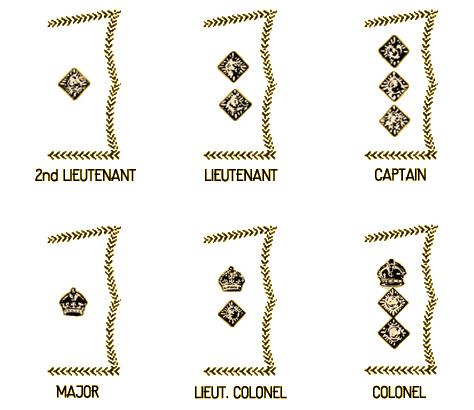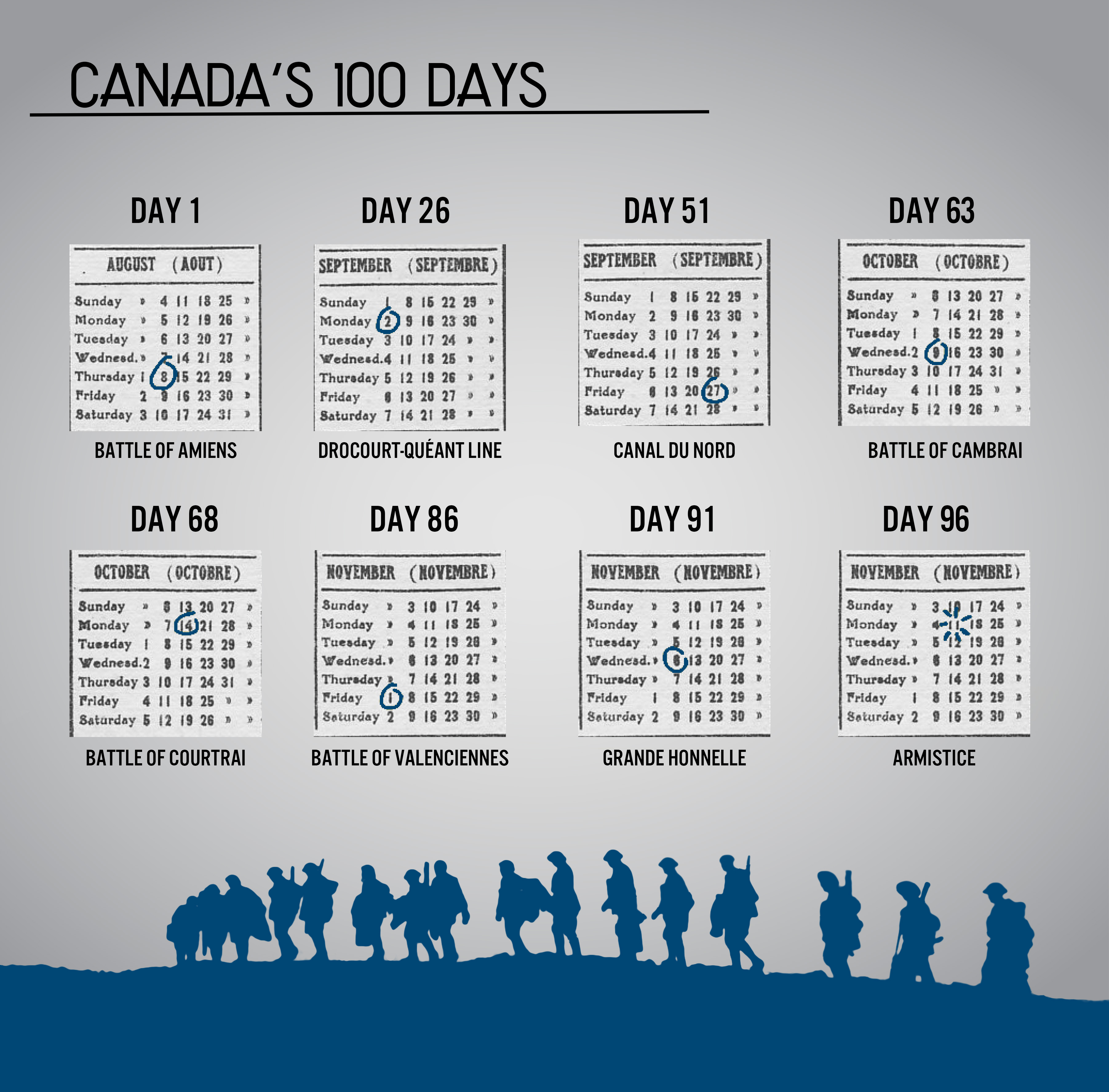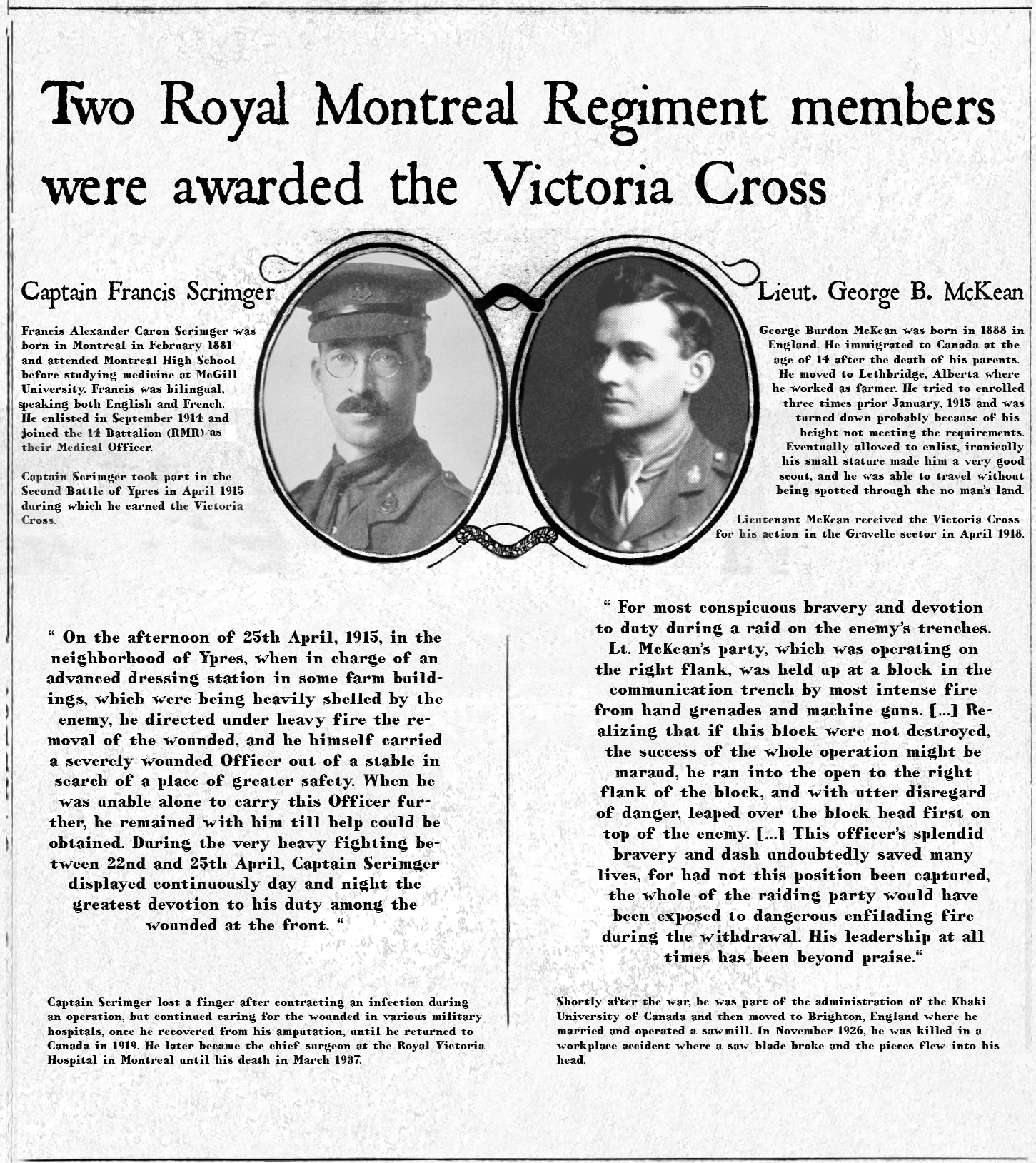The war on the Western Front was fought in trenches – long, narrow, deep, and muddy ditches. The Canadian infantry were rotated in and out of the trenches as it was the most dangerous place on earth to be, and it was extraordinarily uncomfortable. The soldiers lived with vermin such as rats, lice, maggots, and flies which created serious health risks. The trenches were also constantly exposed to the weather. Here is what a day in the trenches looked like for soldiers.
Unit 2: Follow Canada’s Last 100 Days
A Day in the Life of a Soldier
An Overview of the Canadian Uniforms
Each soldier carried a minimum of 60 pounds of equipment. Adding to that, the weight of mud collected on uniforms and equipment typically added another 60 pounds.
The Canadian Expeditionary Force soldiers wore the same uniform which was made from a thick wool and dyed in khaki. Wearing a drab color was a good way to camouflage on the battlefield.
Officers’ uniforms like this one on the left were slightly different from those worn by soldiers. Officers had a button shirt and a tie underneath a opened collar jacket. Their pants were not a straight cut but larger around the thighs and tighter around the calves. Officers were also allowed to carry certain objects with them such as a whistle, a camera and a handgun.
What’s an Officer ?
An officer has a wide range of responsibilities such as coming up with plans and being trusted with the execution of operations and daily activities. Officers are in command so they issue orders and lead soldiers to achieving the plans.


The Last Hundred Days? Well, 96 days.
Between August 8th, 1918 and November 11th, 1918, the Allied forces led a series of successful attacks on the Western Front. The Canadian Expeditionary Force contributed greatly to this last push and the event was nicknamed “The Hundred Days”.
German troops were pushed back from Amiens, France to Mons, Belgium in under 100 days by a fast-moving infantry force supported by tanks, aeroplanes and a well-coordinated artillery. The retreating German troops were unable to retaliate and their morale progressively worsened.
On November 11th, at 11:00 am the Armistice was signed and the combat stopped. It took six months to reach the Treaty of Versailles signed on June 28th, 1919.

Overview of WWI Medals
Virtually every country has a formal system to bestow honours on their citizens, and most also have specific honours reserved exclusively for members of their armed forces. Canada’s honour system is called the Order of Canada in which specific insignia are given to reward service or a valorous act.




